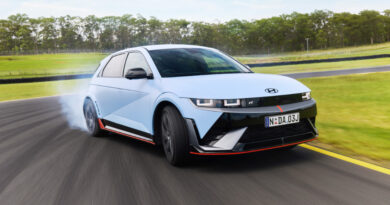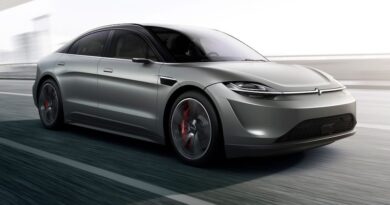Audi EV fightback! Busiest period ever for German brand as it targets electric cars from BMW, Mercedes-Benz, Volvo
Audi’s EV fightback kicks off now with the triple motor SQ8 e-tron and upcoming Q4 e-tron that’s primed to take advantage of the generous fringe benefits tax (FBT) exemption.
But the real action is over the next two years as the German brand heads towards its busiest period of new model action in its century-long history.
More than 20 models – most of them electric and most of them all-new – are due over the coming years as Audi looks to refresh its model line-up and catch up luxury rivals who are further down the electric vehicle path.
READ MORE: New 2024 Audi Q6 e-tron co-developed with Porsche Macan unwrapped
READ MORE: Refreshed Audi e-tron GT primed for Taycan upgrades – and even more power!
READ MORE: Rally ready Audi Q8 e-tron Edition Dakar is the desert-bashing rugged EV you can buy
READ MORE: Audi Q4 e-tron is double trouble for Tesla Model Y arriving in 2024
Speaking at the launch of the SQ8 e-tron – the updated version of the car previously known as the e-tron S – Audi Australia managing director Jeff Mannering said the brand was about to finally get serious on EVs.
“It’s the busiest (period) in the history of Audi in the next 24 months of brand new cars,” says Mannering, adding “it’s not just facelifts, it’s nearly all new cars”.
“Somewhere around 20 different models are coming as brand new cars in the next 24 months.”
One of those models is the new Q6 e-tron, which shares much of its architecture with the new Porsche Macan EV.
Mannering sees the Q6 e-tron as a crucial model for the brand, one that could tempt some currently buying a diesel- or petrol-powered Q5 to step into an electric car.
While pricing is likely to be well north of $100K, the Q6 e-tron is still seen as an important model.
“(It) sits in a segment that I reckon there’s a bit of a gap for us,” said Mannering.
The new A6 sedan and wagon is also expected to make the EV switch.
“In the next 18 months there will be another passenger car … that’s maybe full electric rather than plug-in hybrid,” he said without detailing exactly what it would be.
And Audi is also working on bolstering its EV product line-up across its portfolio as it switches to an all-EV model in less than a decade.
That means a steep ramp-up in EV take-up to bring Audi closer to its luxury rivals.
Last year just 2.8 per cent of the 19,039 cars Audi sold in Australia were powered by electricity.
By comparison, Volvo’s 2023 EV share was 35.5 per cent, BMW’s 11.4 per cent (in 2024 it’s running closer to 25 per cent) and Mercedes-Benz’s 13.1 per cent.
Audi is also looking to take advantage of increased interest in plug-in hybrid electric vehicles.
As with many new models coming soon, the all-new Q3 small SUV that’s due to be unveiled within months will be offered as a PHEV.

And it’s the PHEV that Mannering wants to become an integral part of the range.
“If I had my wish I would like to position it where one of the entry motors is for the Q3 – like a 35 TFSI,” he said.
That 35 TFSI is currently the most affordable Q3 on the market, priced from $54,600 plus on-road costs.
“I don’t think we’ll be able to get there because there’s more technology in the car,” said Mannering, adding that even if the PHEV wasn’t the cheapest alternative it will be close to it, giving it potentially large volume aspirations (the Q3 is these days Audi’s top selling model).
“It’ll be somewhere around the bottom (of the range in terms of pricing) … you need to get volume to offset your CO2 (fleet average emissions. So your price position is really important and the factory knows that.”
Mannering even said he’d considered stripping some equipment from the plug-in version of the Q3 relative to its petrol-only alternatives in an effort to make it more competitive from a pricing perspective
“You can take some options out; I’m not sure I would take too many options out.”
Either way, expect plenty of action from Audi in the next few years as those 20 new models – many EV and hybrid – start making their way onto the market.




